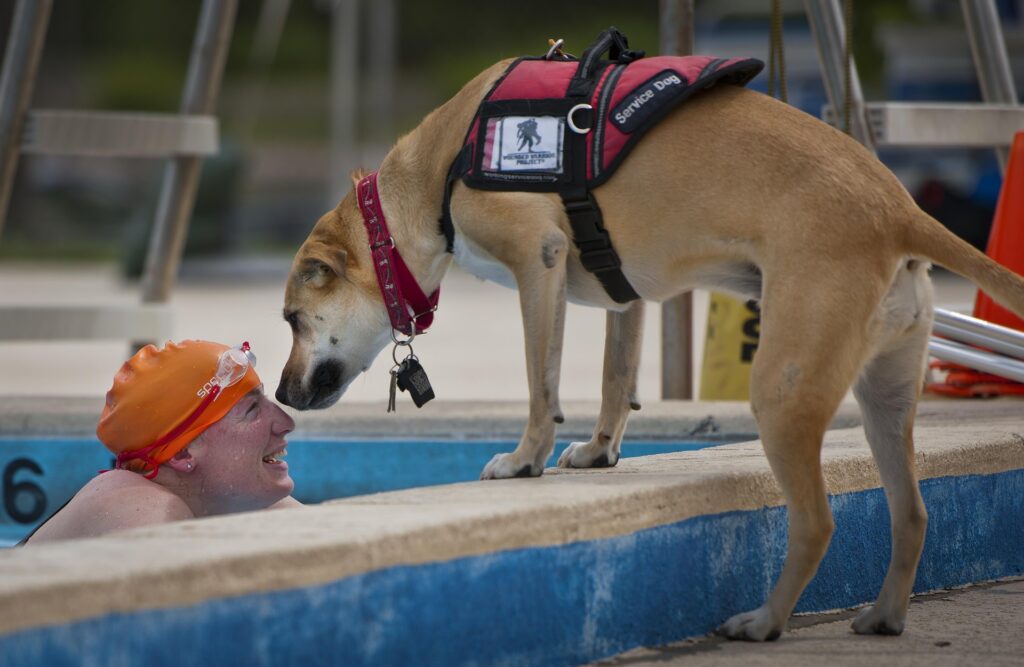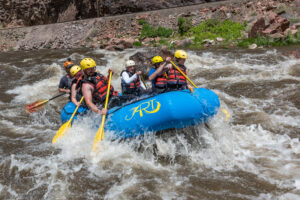Make use of a guide (human)
Running, whether on a track, trail, or around the neighborhood, is one of the cheapest, easiest ways to stay healthy and active for those with full sight. For those with a visual impairment, however, it’s not always that easy. But if you employ the expertise of a guide runner, the places you can run are pretty much limitless.
The United States Association of Blind Athletes is a great resource for human-guided assistance:
“The guide runner and blind athlete run in unison with a foot long tether held firmly in the fingers of the guide and athlete. Tethers can be as simple as a shoe string or made of other materials such as leather. The purpose of the tether is to allow freedom of movement for both the blind athlete and the guide, but keep them in close proximity of each other. As they run, the guide becomes a play-by-play announcer of sorts. It is the guide’s responsibility to provide verbal cues to the athlete on matters such as upcoming hills, turns, curbs, uneven footing, where other competitors are in the race, times, etc.”
Make use of a guide (dog)
Guides sometimes walk on all fours and are better conversationalists. For those with a visual impairment, a service dog can offer freedoms that even human guides cannot provide.
Service dogs assist their owners by helping them avoid obstacles, warning them of sudden elevation changes, and when it’s necessary, even disobeying orders if those orders puts them in an unsafe situation. These highly intelligent companions are perfect for visually-impaired people who want to experience activities like hiking, backpacking, and deep woods camping.
Step outside your comfort zone
“Alpine (downhill) skiing is one of the rare opportunities available which allows the blind individual to move freely at speed through time and space. An opportunity to embrace and commune with the primal force of gravity, thus experiencing the sheer exhilaration of controlled mass in motion, in a physically independent setting,” says Brian Santos, a visually-impaired former Paralympic champion.
Skiing is truly special to those with visual impairment. And with the help of a guide, all the fun of the slopes is well within your grasp.
There are two basic ways to make this possible, according to VisionAware:
“The guide remains behind the skier, orienting the skier with verbal descriptions and instructions. This system requires wide slopes with few obstacles; or the guide precedes the skier and provides orientation through verbal instructions as the skier follows the outline of the guide’s body and movements. This system requires fewer precise instructions, since the skier primarily follows the voice and movements of the guide.”
Skiing is just one way to step outside your comfort zone and tackle a sport that’s a little “extreme”.
Want more “extreme” adventure? Try whitewater rafting. Many rafting tours offer opportunities for the visually impaired. With a guide or without, depending on your comfort level, you too can experience the excitement and challenges of rafting.
In fact, those with visual impairment can experience a wide variety of sports like surfing, sailing, and rock climbing. If you can dream of it, it’s probably already been done. Take a cue from those who have forged a path of adventure despite their visual impairment. You can follow in their footsteps.
Written by Travis White

















